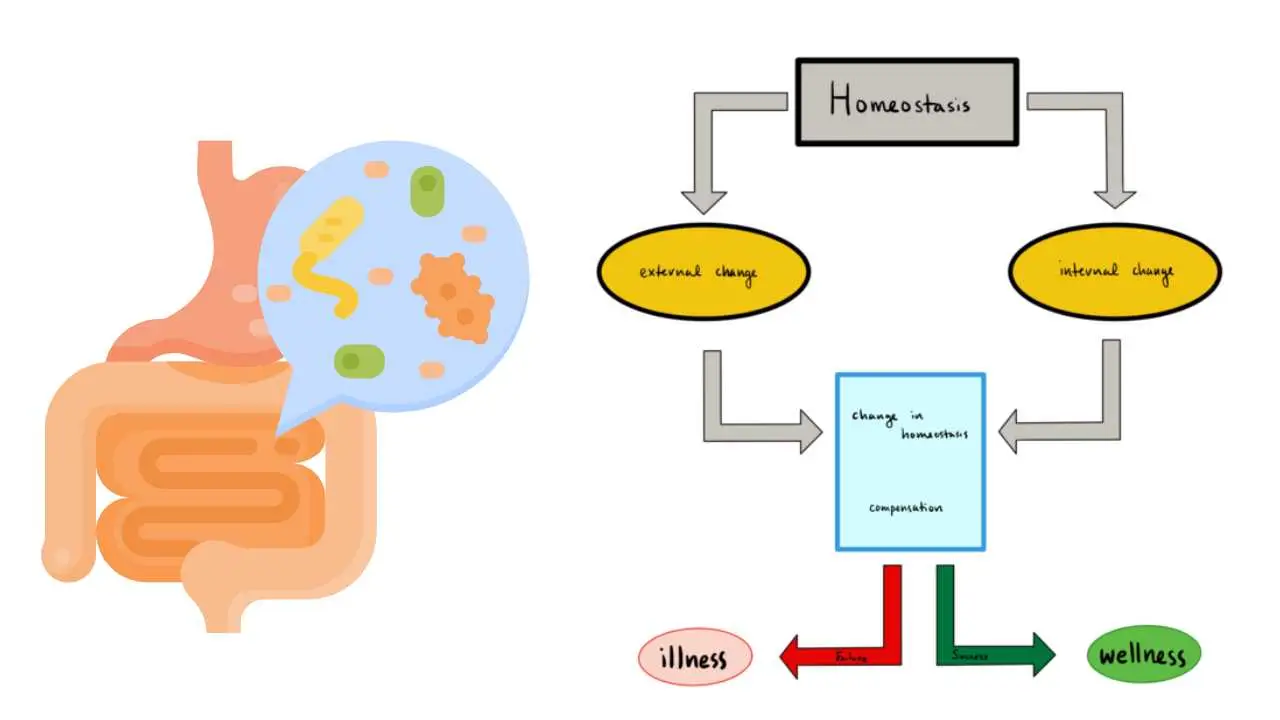Have you ever thought about how your body keeps everything in balance? Well, there’s a fancy word for it – homeostasis. Let’s take a closer look at this natural balance, understand what it means, and see why it’s so important for our health.
Table of Contents
ToggleWhat is the name for the body’s internal state of balance?
What is Homeostasis?
Homeostasis refers to the body’s internal the state of balance. It refers to our systems’ amazing ability to regulate multiple physiological parameters while remaining stable in the face of environmental change. Consider your body to be a highly tuned orchestra, with various instruments representing organs and systems, all working together to create the wonderful symphony of life.
How Does Homeostasis Work?
-
Temperature Regulation:
- Question: What keeps our body temperature constant?
- Answer: Homeostasis ensures that our body temperature remains around 98.6°F (37°C). When it’s too hot, we sweat to cool down, and when it’s cold, we shiver to generate heat.
-
Blood Sugar Control:
- Question: How does the body manage blood sugar levels?
- Answer: Homeostasis regulates glucose levels. When they rise after a meal, insulin is released to store excess sugar. In between meals, glucagon is released to release stored glucose when needed.
-
pH Balance:
- Question: What maintains the body’s pH balance?
- Answer: Homeostasis ensures that our blood remains slightly alkaline. If it becomes too acidic, the body adjusts by releasing bicarbonate to neutralize excess acids.
-
Fluid and Electrolyte Balance:
- Question: How does the body maintain fluid balance?
- Answer: Homeostasis regulates the balance of fluids and electrolytes by adjusting the amount of water and salts excreted through urine and sweat.

Importance of Homeostasis:
1. Ensures Cellular Function:
- Homeostasis is vital for the proper functioning of individual cells. It provides an optimal environment for cellular activities, allowing them to carry out their functions effectively.
2. Supports Organ Function:
- Organs require specific conditions to operate efficiently. Homeostasis ensures that organs receive the necessary nutrients and oxygen, maintaining their optimal performance.
3. Adapts to External Changes:
- The ability to maintain internal balance allows the body to adapt to external changes, whether it’s a change in temperature, diet, or physical activity.
4. Promotes Health and Well-being:
- A well-maintained internal environment promotes overall health and well-being. It helps prevent illnesses and ensures the body’s resilience against various challenges.
Here are a few additional points you could consider
1. Evolutionary advantage: Briefly mention how homeostasis has played a crucial role in the evolution and survival of species. Maintaining a stable internal environment allows organisms to adapt to a wider range of external conditions, giving them a competitive edge.
2. Individual variations: While the concept of homeostasis is universal, highlight that the specific set points and mechanisms for maintaining balance can vary between individuals and even throughout life. Factors like age, genetics, and lifestyle can influence these variations.
3. Beyond the physical: Briefly touch upon the concept of allostasis, which suggests that the body actively seeks to maintain stability not just in physical parameters, but also in psychological and emotional states. This adds a further layer of complexity to the notion of internal balance.
4. Role of technology: Briefly mention how advancements in technology, like prosthetics and artificial organs, are being used to support or even extend the body’s ability to maintain homeostasis. This opens up exciting possibilities for future healthcare applications.
5. Call to action: Conclude by encouraging readers to be mindful of their own internal environment and actively support their body’s natural balancing mechanisms through healthy habits like balanced diet, regular exercise, and adequate sleep.
Conclusion
Finally, knowing homeostasis reveals the remarkable mechanisms that keep our bodies in harmony. These complicated systems, from temperature regulation to pH balance, all work together to keep our bodies in balance. Adopting a homeostasis-promoting lifestyle is an important step towards guaranteeing your body’s optimal functioning and long-term health.









